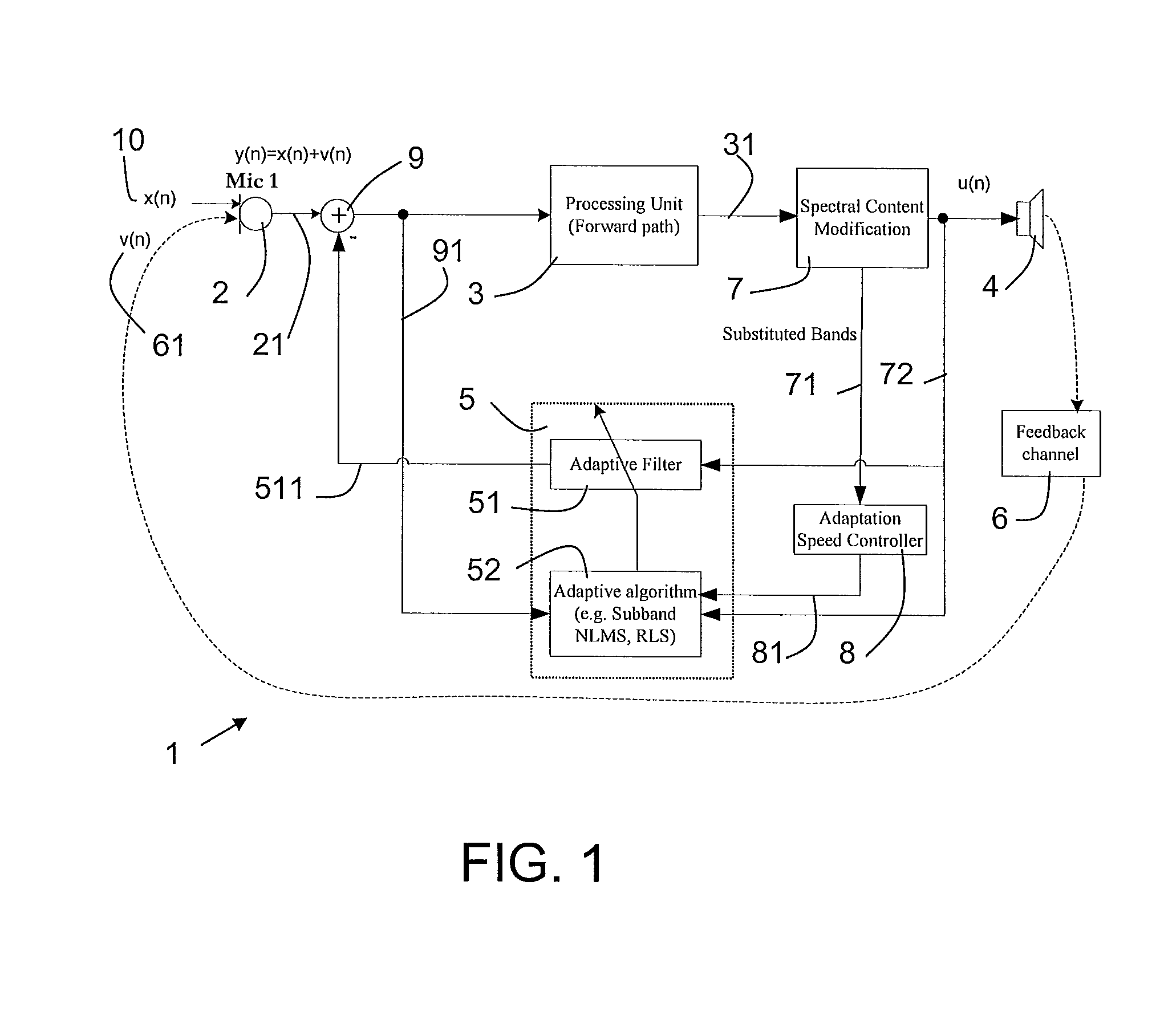Spectral content modification for robust feedback channel estimation
a feedback channel and spectral content technology, applied in the field of feedback cancellation in listening devices, can solve the problems of signal distortion, potential loss of intelligibility, autocorrelation of input signals, etc., and achieve the effects of reducing signal quality, accelerating adaptive algorithms, and high degree of uncorrelatedness
- Summary
- Abstract
- Description
- Claims
- Application Information
AI Technical Summary
Benefits of technology
Problems solved by technology
Method used
Image
Examples
Embodiment Construction
[0053]The proposed scheme is general in the sense that it supports any type of spectral content modification, e.g., appropriately filtering a white noise sequence, or randomization of the phase spectrum in a given band (while maintaining the magnitude spectrum), that is perceptual noise substitution, copying and scaling of spectral content from neighbouring bands, that is spectral band replication, copying and scaling of spectral content from the same band but from another microphone (either in the same hearing aid or the hearing aid from the opposite ear), etc.
[0054]FIG. 1 outlines the proposed scheme in the form of a listening device 10 (here a hearing instrument) comprising a microphone 2 (Mic 1 in FIG. 1) for converting an input sound to a an electric (digitized) input signal 21, a receiver 4 for converting an (electric) improved processed output signal 72 to an output sound, a forward path comprising a signal processing unit 3 (Processing Unit (Forward path) block) being define...
PUM
 Login to View More
Login to View More Abstract
Description
Claims
Application Information
 Login to View More
Login to View More - R&D
- Intellectual Property
- Life Sciences
- Materials
- Tech Scout
- Unparalleled Data Quality
- Higher Quality Content
- 60% Fewer Hallucinations
Browse by: Latest US Patents, China's latest patents, Technical Efficacy Thesaurus, Application Domain, Technology Topic, Popular Technical Reports.
© 2025 PatSnap. All rights reserved.Legal|Privacy policy|Modern Slavery Act Transparency Statement|Sitemap|About US| Contact US: help@patsnap.com


